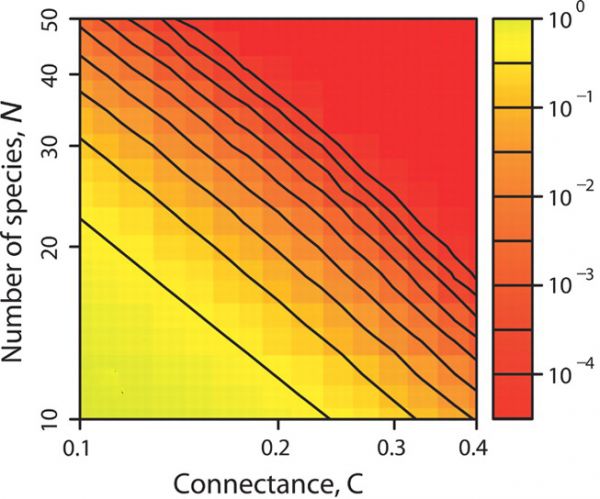gross2009generalized
Generalized Models Reveal Stabilizing Factors in Food Webs
Thilo Gross, Lars Rudolf, Simon A, Levin and Ulf Dieckmann
Science 325, 747-750, 2009
Insights into what stabilizes natural food webs have always been limited by a fundamental dilemma: Studies either need to make unwarranted simplifying assumptions, which undermines their relevance, or only examine few replicates of small food webs, which hampers the robustness of findings. We used generalized modeling to study several billion replicates of food webs with nonlinear interactions and up to 50 species. In this way, first we show that higher variability in link strengths stabilizes food webs only when webs are relatively small, whereas larger webs are instead destabilized. Second, we reveal a new power law describing how food-web stability scales with the number of species and their connectance. Third, we report two universal rules: Food-web stability is enhanced when (i) species at a high trophic level feed on multiple prey species and (ii) species at an intermediate trophic level are fed upon by multiple predator species.

Figure 1: Analysis of 35 Billion randomly generated food webs confirms Robert May's predicted complexity stability law. Nevertheless there are some surprises. Weak links become destabilizing in food webs of more than 30 species and there is a certain architecture that leads to extraordinarily stable webs.